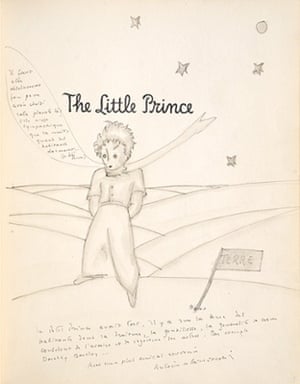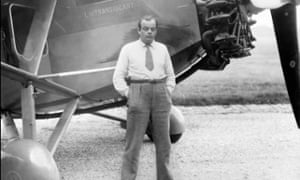“I am concerned with matters of consequence,” declares the star-gazing businessman whom Antoine de Saint-Exupéry’s Little Prince meets during his journey. “I am accurate.” But a unique first edition of the novella, which has just gone on sale in London for £150,000, reveals how the author came up with the figure of 501,622,731 for the number of stars the businessman claims as his own.
During the encounter on the fourth planet he visits, the Little Prince finds the businessman busy calculating the number of the “little golden objects that set lazy men to idle dreaming” in the sky. Saint-Exupéry wrote The Little Prince while living on Long Island in the States, so when he wanted to find out how many stars can be seen from Earth, he asked a friend, the New York Times reporter Helen Lazeroff. Her assistant, Dorothy Barclay, phoned the Hayden Planetarium and reported back.

According to the rare-book dealer Peter Harrington, which is selling the first edition, the author was so grateful to Barclay that he inscribed this copy of the book to her and drew an image showing a disappointed Little Prince after landing on planet Earth.
In the image, the character says: “You’d have to be completely crazy to have chosen this planet. It is only pleasant at night when the inhabitants are asleep.” But Saint-Exupéry adds beneath: “The Little Prince was wrong. There are on Earth some inhabitants whose straightforwardness, sweetness and generosity of heart make up for the avarice and egotism of the others. For example, Dorothy Barclay …”
It’s unlikely Barclay came up with a figure anywhere approaching the businessman’s count – a Yale University estimate suggests the number of stars visible from Earth is closer to 9,000 – but according to Sammy Jay at Peter Harrington, Saint-Exupéry was inspired by her efforts and “found this touch of generosity very moving”.
The story, a fable about a pilot who meets a child prince who has fallen to Earth from his tiny planet, which has three volcanoes and a beloved rose, was published in 1943. The next year, its author would die on a reconnaissance mission to southern France. Presentation copies are therefore very rare.
“This is the finest copy Peter Harrington has ever encountered. It is much more than just a first edition as it is inscribed with an original drawing,” said Jay.

The book also includes a typed note from Barclay, addressing the author and saying how “movingly beautiful” she found The Little Prince. “The gift of saying much in a few words is not mine ... But perhaps this might show you what I mean,” she writes. “Even when I was a child your first drawing would not have terrified me”. Barclay is referring to the opening of the story, in which a pilot, crashed in the desert, recounts how his first drawing, intended to frighten viewers, was of a boa constrictor swallowed by an elephant (it looks like a hat).
“It has been only lately – and through the magic of your mind – that I have seen as high as the stars – and now at last beyond them to the Little Prince, and the sheep, and the rose, on Asteroid B-612,” wrote Barclay in her note.
The book, translated into more than 100 languages, has sold over 140m copies around the world. A new animated film adaptation is due to premiere at the Cannes film festival next month.
No comments:
Post a Comment
We enjoy hearing from visitors! Please leave your questions, thoughts, wish lists, or whatever else is on your mind.